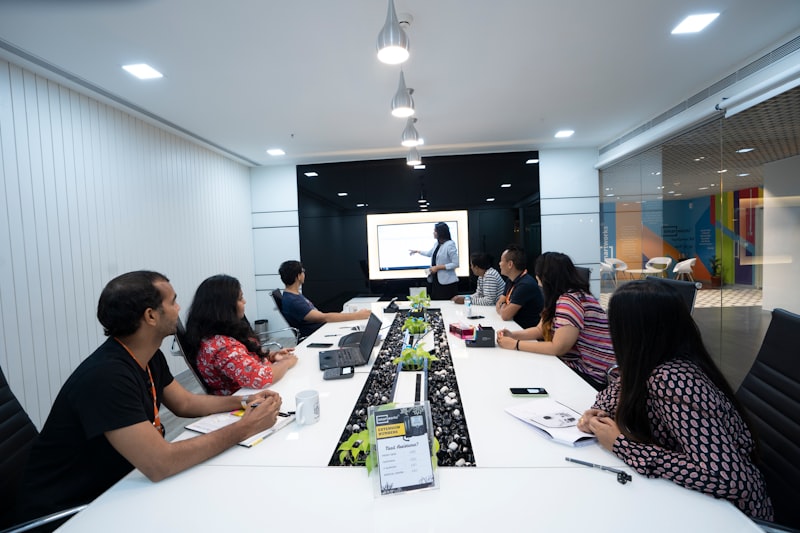If you're a large financial institution, the integrity of your assets is paramount. These assets are what makes your institution what it is—they are the core of your business and its success. They are also incredibly valuable, and often require a lot of care and attention to keep them safe from outside threats.
But how can you protect these assets? How do you stop people from stealing them? And how can you do it without losing sight of the core values that make your institution so special? Let's find out.
Training and Education
You can follow the best practices and have a strong compliance program, but if your employees aren’t properly trained or educated, you are at risk of not only non-compliance but also failed audits.
Many problems that arise in an institution are because of employee error. While this may be unintentional, it still can lead to liability for your financial institution. Additionally, with the ever-changing regulations, it is important to ensure that all employees receive up-to-date training and education on these changes. This is why it is so important to use a dedicated compliance platform and make sure your employees are fluent in using it.
Protecting Client Information
How do you defend what you don't know? Understanding where your data is stored, how it is protected (or not), and who has access to it are vital steps in building a strong plan of action.
Your first step should be identifying the most sensitive data you need to protect—and this will vary depending on your business model. If you're a bank or credit union, for example, the most sensitive data on hand is probably going to be customer account information—names, addresses, Social Security numbers, etc. For insurance companies and healthcare organizations, personally identifiable information (PII) is perhaps the most critical and vulnerable asset.
Other factors can influence what needs protection as well. If your company operates across state lines or even internationally, there may be multiple sets of regulations governing data privacy that apply to different pieces of information based on their location. A payments processor may have dozens of clients' payment details in its possession at any given time; that means keeping those details secure from all angles becomes doubly important if even one set of the clientele are subject to specific regulatory requirements. And if those details aren't secured properly at all times? The haul from even just one breach can go from bad (e.g., $10 million in litigation costs) to much worse ($200 million).
Collecting Sensitive Information From Clients
- Collect only the personal information that you need, when you need it. For example, if you are collecting information for marketing purposes or to make a one-time purchase or transaction, then there is no reason to collect a social security number.
- When requested by a client to provide sensitive information, make sure that the request is legitimate and that your client is an authorized user.
- Avoid using social security numbers as account identifiers; use an alternative identifier instead.
Accounting Practices
The cornerstone of a robust and reliable financial institution is sound accounting practices. It's important that you take steps to ensure your financial records are accurate and up-to-date.
Keeping your books in good order is key, so at the very least you should be reconciling your accounts once a month---and if you're dealing with large amounts of money, daily is not out of the question. More frequent reconciliations will allow you to catch errors earlier---or in the case of fraud, sooner.
You should also be on the lookout for suspicious activity or unusual account balances or entries.
Of course, it's also important to have good recordkeeping practices and internal controls in place so that only authorized personnel can access receipts and other documents (including bank statements), thereby reducing the risk of fraud being committed in the first place.
Finally, although it may seem like a hassle at first, instituting regular audits will help keep everything running smoothly by allowing you to identify errors early on when they aren't as costly to fix.
Real-Time Data Monitoring and Alerts
Real-time monitoring and fraud alerts are key to protecting your business—in this section, we're going to go over the best ways to use them.
Real-time data monitoring involves periodically reviewing data from all of your accounts, checking for suspicious activity and fraudulent activity. It's important that you constantly monitor your accounts in real-time because it can help catch fraud on time and help prevent the loss of assets that come with fraud.
By using alerts for suspicious activities and fraudulent activities, you can ensure that a lot of the manual work required for real-time data monitoring is done automatically. This frees up a lot of resources that would be better spent elsewhere in your company. Real-time alerts allow you to set thresholds so that once an account hits a certain amount or when suspicious activity happens, an alert will be sent to you (or whoever else you want). You can also set alerts for any attempts at stealing from your company (like if someone sends payment outside of company policy).
Reporting Unusual Activity and Administrative Suspicious Activity Reports
Reporting unusual activity is crucial.
Unusual activity can be any type of transactional or operational behavior that falls outside an established baseline, such as a customer not following normal operating procedures or engaging in an abnormal activity. It also includes situations in which there is no clear justification for the unusual activity, and variations in volume or size of transactions. This could include large transfers over multiple accounts or across countries and unusually high numbers of new accounts opened by one individual.
When you see suspicious behavior, it's important to report it properly so that we can investigate potential risks. Follow these steps to report unusual activity:
- Gather all pertinent information—date, time, location—and write down details about the individuals involved, including their names and contact information if available;
- Provide detailed documentation about the incident;
- Complete a suspicious transaction report form;
- Submit all required documents; and
- Acknowledge receipt of suspicious transaction reports sent by law enforcement agencies within 3 business days from receipt.
Network Security and Infrastructure
When it comes to protecting your financial institution’s network, you want to make sure that you are using the best firewall software and encryption available to you. Your firewall will help protect against malicious attacks, while your encryption makes it harder for data to be intercepted by those who might want to use it later. You may also want to consider using some anti-virus software as well.
When connecting remotely take steps to protect against remote access as well. Many users are unaware of this risk and may unknowingly put themselves at greater risk by allowing a hacker into their system through these types of connections.
You should also look into any phishing protection software that you can find and make sure it is updated regularly so that you don't miss out on any messages from potential scammers or hackers looking for unauthorized access into your system.
Keep all of your security software up-to-date in order for them to work properly, which includes both anti-virus programs as well as spyware and malware protection programs.
Secure Payments and Purchases
Secure Payment Providers – Many financial institutions, such as banks and credit card companies, offer their own form of online payment service. This system generally requires users to enter a personal identification number (PIN) in order to access their account and make a purchase or transfer money. Unfortunately, many consumers who use these systems fall victim to security breaches—and the internet is full of stories about how they were vulnerable to identity theft due to weak passwords or negligent security practices.
Passwords: The most important task when it comes to securing your financial information is choosing a strong password. If you are used simply picking something that resembles your name and birthday, you should reconsider this option. Use a mix of special characters, numbers, and letters in both uppercase and lowercase.
2-Factor Authentication – Don't skip 2FA even if it seems redundant for some reason. All you have to do is enter a code via text message or a code generated on a 2FA app like Google Authenticator or Authy. These codes add an additional layer of security as they are valid for only a few seconds.
Safeguarding Sensitive Data Against Malware Attack
Malware is a malicious piece of software designed to exploit the target computer. Malware may be delivered directly to your institution via email, or an employee may access it through an infected website or file-sharing network. Scammers are creative and will often disguise malware as a legitimate document by using a benign name such as “invoice” and embedding it into an email.
Unauthorized access to sensitive data can result in considerable financial losses for everyone involved, putting your institution at risk of lawsuits from customers whose information has been compromised.
We hope you've enjoyed this list of ways to protect the integrity of your financial institution.
As a final note, we'd like to remind you that these tips are only as good as they are useful. If you're not making use of them, then they're just a pretty list—and that's not what we want for you!
So go ahead and put them into practice. You'll be glad you did!






